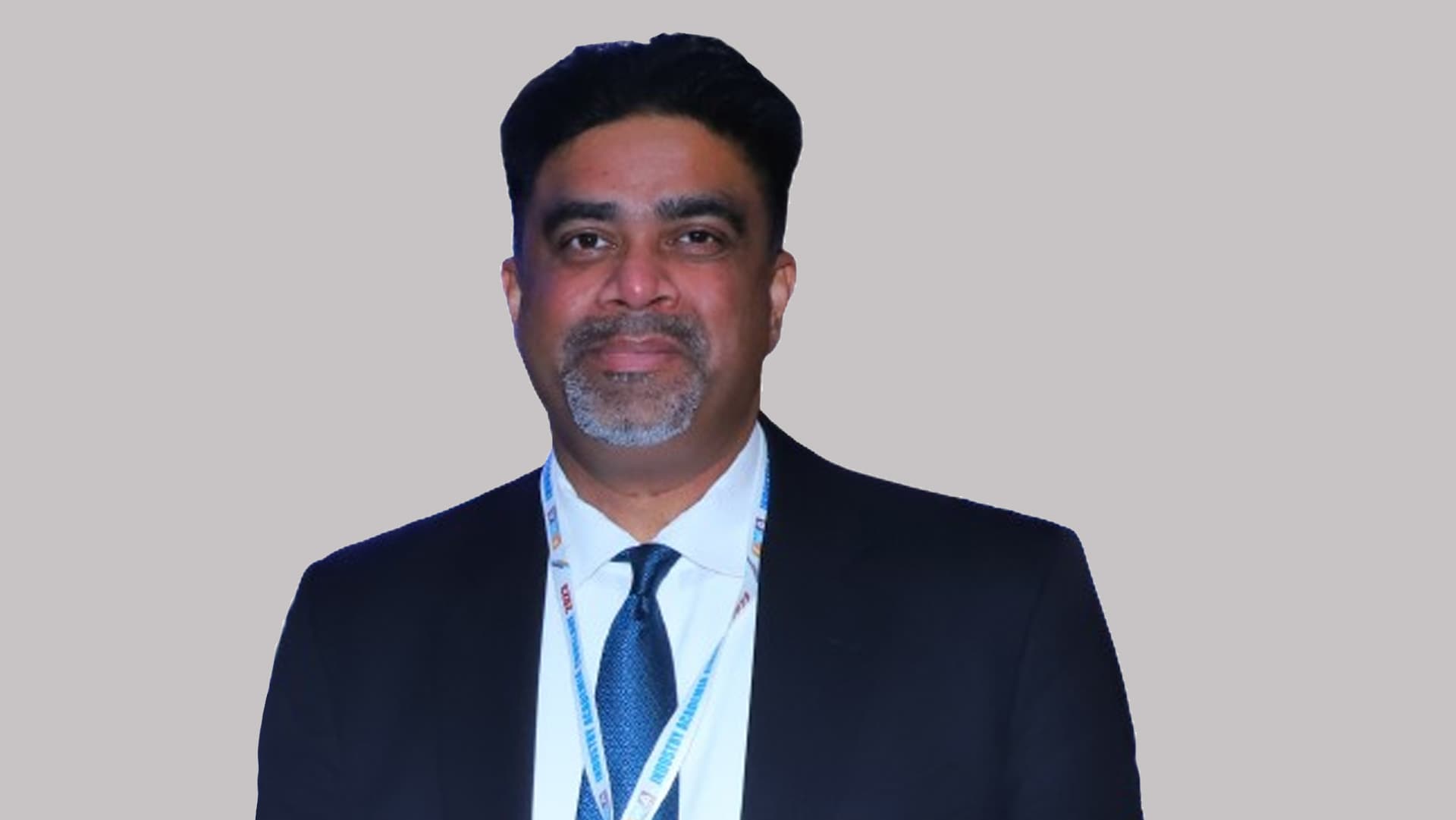“Understand what it means to be employable, not just landing a job, but excelling in it,” Amol Dani, CEO of Keybridge Global Education, tells Education Post’s Prabhav Anand, while sharing his views about the evolution and future trajectory of the education technology (EdTech) landscape. With over 18 years’ experience in higher education, talks about the critical need to bridge the gap between education and employability on a global scale.
Q. Tell us about your journey and what led you to start Keybridge Global Education?
I’ve been in higher education for over 18 years, working at Georgetown University in Washington, DC. My global involvement led me to establish a branch campus in Qatar in 2005, focusing on undergraduate and executive education. Throughout this, my interest grew in understanding how education transcends global boundaries. My PhD work delved into the globalization of education, and over the years, I noticed a persistent gap between university education and workplace expectations. Universities aim to create informed citizens, but employers expect immediate job readiness. Recognizing this disconnect, I founded Keybridge Global Education to bridge the gap between education and employability on a global scale. This issue isn’t confined to one region; it’s a global challenge that has persisted for generations. The decision to address it through online learning became evident during the pandemic, providing a scalable platform for our mission. We embarked on this journey in 2021, aspiring to be the key to bridging the education-employability gap.

Q. How do you perceive the current state of the EdTech sector in India?
EdTech, broadly categorized into K-12, test prep, and skills or career tech, has seen fluctuations post-pandemic. In K-12, there was a surge during the pandemic, but the expansion seems limited now. Test prep remains crucial, with expectations of consolidation due to a multitude of small centers. In my focus area, skills tech in higher education, we’re in the early stages of a transformative journey. Universities must rethink physical and digital infrastructure use to enhance in-person experiences. Looking ahead to 30 years, I envision a future university model emphasizing digital and individualized micro-learning, with a shift in pedagogy for inperson activities. The post-secondary sector, from universities to mid-career scaling, has substantial growth potential. Anticipating consolidation in the sector, corporate learning and development present significant opportunities. With companies investing in training, especially in growing sectors like family-owned businesses, the next decade holds promise for EdTech evolution, fostering partnerships and creating online learning environments. The future appears bright for those venturing into the EdTech space.
Q. With the global Ed-Tech market projected to hit over $460 billion by 2026, what opportunities do you see for Indian EdTech companies on a global scale?
With India’s innovative tech landscape, companies like Erilitis (Emeritus) from Bengaluru have expanded operations in South America, collaborating with leading US universities. Byju’s, a key player, has ventured into the US market in the repair sector. Indian EdTech’s early start addresses mass-scale problems, leveraging the demographic dividend of the world’s largest middle class and young population (550 million aged 18-55). This expertise positions Indian EdTech globally, particularly in South America and Africa, mirroring India’s growth dynamics. African regions, like India, face educational accessibility challenges, making Indian EdTech’s solutions valuable. The portability and time flexibility offered by EdTech break traditional constraints, creating a promising scenario for Indian EdTech in these continents.
Q. How do you see the role of Artificial Intelligence and machine learning evolving in the Indian EdTech sector?
I think AI and ML can really enhance and support learning. The integration of Artificial Intelligence (AI) and machine learning (ML) in the Indian EdTech sector is already underway, ushering in a transformative era. AI and ML, in my view, play a crucial role in enhancing and supporting learning experiences. While they possess the capability to augment learning needs, it’s essential to recognize that they cannot replace the richness of the learning experience itself. Instead, we should view machine learning as a tool to amplify our learning endeavors, eliminating manual processing and providing easy access to algorithmic data.
The impact of AI and ML on personalization in learning is profound. Traditional learning models often lack personalization, a gap that AI and ML can effectively bridge. Drawing parallels with the Montessori school system, where students are taught in a way that aligns with their individual learning styles, AI and ML can deliver bespoke learning experiences across educational levels-be it K through 12, universities, or corporate learning and development at various career stages.
The key lies in leveraging AI and ML to offer tailored experiences, whether through diverse teaching methods or adapting content formats based on individual preferences. However, despite the advanced capabilities of AI, human intervention remains crucial, particularly in the application of data. While AI can furnish an abundance of results, it is the human touch that interprets and applies this data effectively.
Looking ahead, the rise of generative AI introduces intriguing possibilities. Automated tools can assist in generating content, but the challenge lies in how individuals utilize and personalize this information. As we witness the emergence of cognitive learning processes, there’s a glimpse into a future where AI comprehends individual writing styles and facilitates personalized matchmaking.
Already, we observe the integration of AI in EdTech platforms, providing automated data mapping and enhancing accessibility. Yet, the true potential lies in the personalization of learning experiences. AI and ML, when harnessed adeptly, promise to revolutionize education by catering to the unique needs of learners, paving the way for a more dynamic and personalized approach to learning.
Q. What are your thoughts on the increasing trend towards lifelong learning subscription services?
I’ve always been a big believer, and that’s why our platform, you know, we have this nomenclature called Forever Learning. It is a term that we use to say that learning shouldn’t stop. Lifelong learning, in most cases, has become about throwing a course at everybody. Oh, you know, you should do this course. You know, yeah, this is the in theme. What really is missing is a hook, a tie back to your own career trajectory. Let’s say I’m a marketing professional, and somebody says, oh, you should look at this cool project management program, maybe the company pays for it. But how does it fit with your trajectory? Employers need to invest funds in learning and development, but they’re not tied back to their development goals. For lifelong learning, learning should be lifelong. It’s an oxymoron that we use lifelong learning. If you think about a traditional model, we always look at education as sequential. Typically, when we finish our undergraduate degree or a graduate degree, we don’t really go back to school. In our twenties, we finish what we call formal education, and for the rest of our lives, we’re learning on the chart. Why should learning be only at the front end? Could there be a model where you’re given the right skills to just get you started in your work? This is totally different thinking. Let’s say you do after year 12, you spend two years on getting basic information, and you start working. Then six years later, now you sort of do the second part of your education because now you’ve learned a lot, and now you’re integrating the learning. This process should continue over the course of your life. The way we do lifelong learning today is just sticking just throwing courses at people. I’m not a big believer in that. It needs to be tied down to person, goals, trajectory, skills they need at that point in time, the skills that they want to aspire for. It definitely needs a hook back. In our platform, we are probably one of the first platforms trying to provide a sort of a hook for them to consistently look at that same metric over the journey of their careers. It has to be tied down to the careers. That’s why we call ourselves the career
I’ve always been a big believer, and that’s why our platform, you know, we have this nomenclature called Forever Learning. It is a term that we use to say that learning shouldn’t stop. Lifelong learning, in most cases, has become about throwing a course at everybody. Oh, you know, you should do this course. You know, yeah, this is the in theme. What really is missing is a hook, a tie back to your own career trajectory. Let’s say I’m a marketing professional, and somebody says, oh, you should look at this cool project management program, maybe the company pays for it. But how does it fit with your trajectory? Employers need to invest funds in learning and development, but they’re not tied back to their development goals. For lifelong learning, learning should be lifelong. It’s an oxymoron that we use lifelong learning. If you think about a traditional model, we always look at education as sequential. Typically, when we finish our undergraduate degree or a graduate degree, we don’t really go back to school. In our twenties, we finish what we call formal education, and for the rest of our lives, we’re learning on the chart. Why should learning be only at the front end? Could there be a model where you’re given the right skills to just get you started in your work? This is totally different thinking. Let’s say you do after year 12, you spend two years on getting basic information, and you start working. Then six years later, now you sort of do the second part of your education because now you’ve learned a lot, and now you’re integrating the learning. This process should continue over the course of your life. The way we do lifelong learning today is just sticking just throwing courses at people. I’m not a big believer in that. It needs to be tied down to person, goals, trajectory, skills they need at that point in time, the skills that they want to aspire for. It definitely needs a hook back. In our platform, we are probably one of the first platforms trying to provide a sort of a hook for them to consistently look at that same metric over the journey of their careers. It has to be tied down to the careers. That’s why we call ourselves the career building partner, which means our job never ends. Lifelong learning service is a subset of that.
Q. How does Keybridge Global Education aim to bridge the gap between education and employability?
Our core belief is that soft skills are essential to workplace success. Unlike some institutions, we don’t just claim soft skills are embedded in our teaching; we’ve curated 28 probability skills that are domain-agnostic. These skills are necessary across industries, albeit in varying degrees. We’ve mapped these soft skills to each job area and developed assessments. The assessment informs you where you stand with respect to your probability skills in your chosen career. We offer tools and resources to improve these skills while you study. For example, if you’re studying mechanical engineering, we collaborate with a university to enhance the skills that complement the mechanical engineering program. This ensures that when you finish your program, you not only possess knowledge but also the skills required for the workforce. This vision acknowledges the global nature of the problem and encourages collaboration among companies and universities.

Nano Learning is an exciting concept. It’s a highly impactful way to deliver a limited amount of information through bite-sized, mostly natural videos. This method is effective across diverse audiences, from K-12 to universities and corporate environments. Imagine a vast library of minute videos catering to various learning needs. While it’s beneficial for mastering nano skills in short bursts, its pedagogy can be part of a broader learning strategy. Some platforms specialize in short videos, particularly in the corporate space, appealing to audiences with limited time. Despite its initial appeal to millennials, the value and benefits of Nano Learning extend across age groups.
Q. What differences have you observed between the Indian and US education systems, especially after the implementation of new policies like NEP in India? Also, what are your thoughts on the future of education in India compared to the US?
The NEP is a positive step, albeit overdue. Key observations include efforts to condense the undergraduate degree to four years in India, while the US is moving towards a three-year model. The cost of education remains a concern. Engineering colleges in India traditionally span four years, unlike arts, science, and commerce colleges. A significant distinction lies in curriculum autonomy. In India, the university dictates the curriculum, limiting faculty creativity. Conversely, in the US, UK, Australia, and Canada, faculty autonomy allows curriculum creation. The emphasis on a research-oriented faculty culture and the tenure system is a hallmark of American higher education. The integration of research and teaching is intrinsic, enhancing the overall learning experience. Internships and cooperative education programs, where students alternate between studying and working over a five-year period, are crucial US education components. These differences profoundly impact students graduating from each system. The NEP 2020’s potential impact will unfold over the next 15 to 20 years, necessitating patience. However, a drawback is the insufficient articulation of the role of online education in the policy. The rush to implementation overlooked this aspect, with limited flexibility in offering online degrees, restricting it to universities with on-ground presence.
Q. What advice would you give to students and professionals navigating their career paths in this digital age?
Firstly, for both educators and students, the language of skills needs integration into the university environment. Understand what it means to be employable, not just landing a job, but excelling in it. Focus on internships during college to gain real-world experience and identify areas for improvement. In the US, it’s common for students to engage in internships or jobs during the academic year and summers. This provides valuable insights into what skills are essential. Combining this practical experience with a deep understanding of skills makes you highly attractive to employers. Government initiatives in India are promoting skills development from eighth to twelfth grade, recognizing the need to bridge the gap early on. The language of skills is crucial, and universities should prioritize it from the outset. Unfortunately, many universities only pay lip service to this idea, prioritizing curriculum delivery over skills and job placement. Shifting this mind-set is essential for better-preparing students for the evolving job market.













